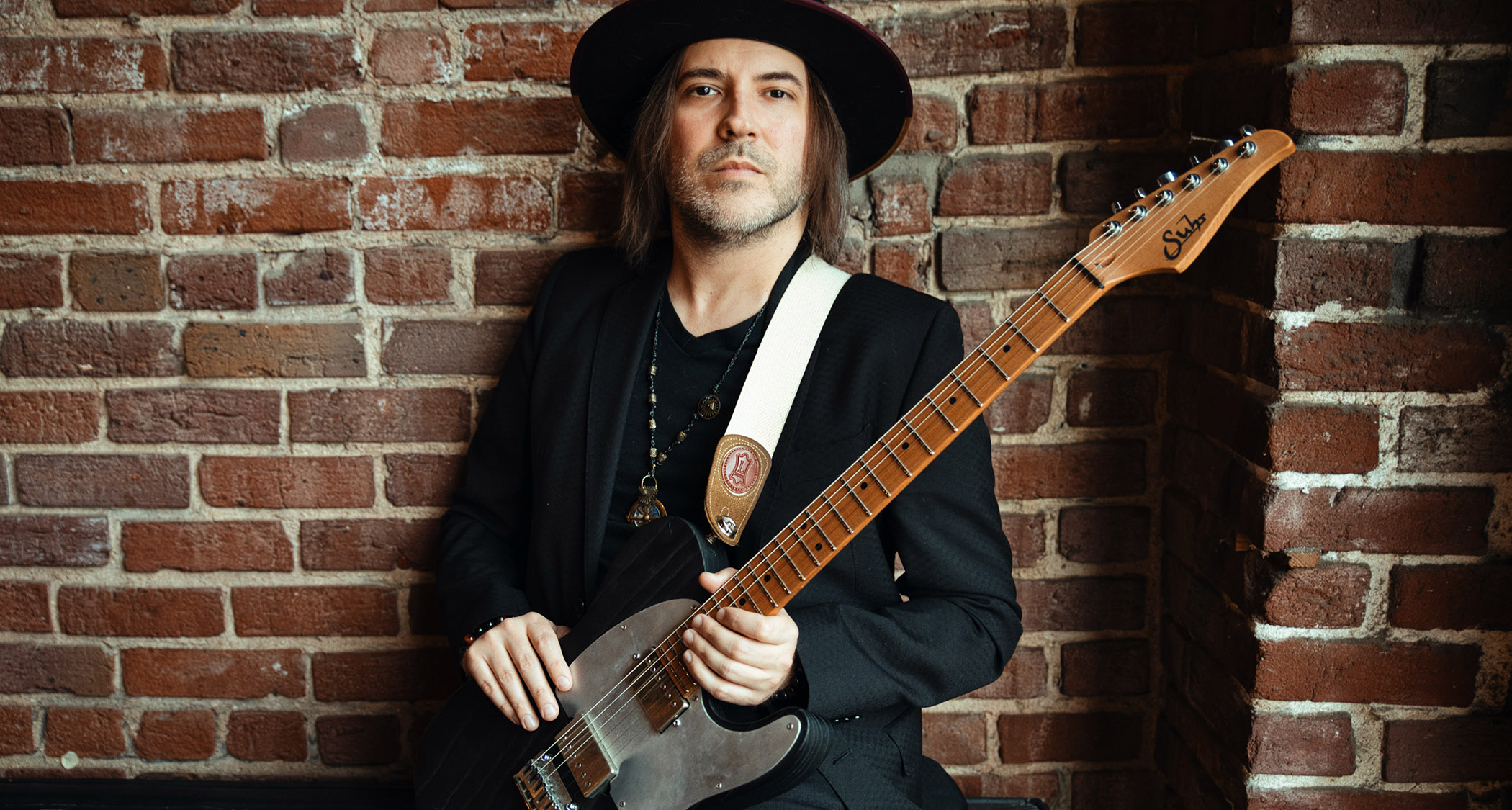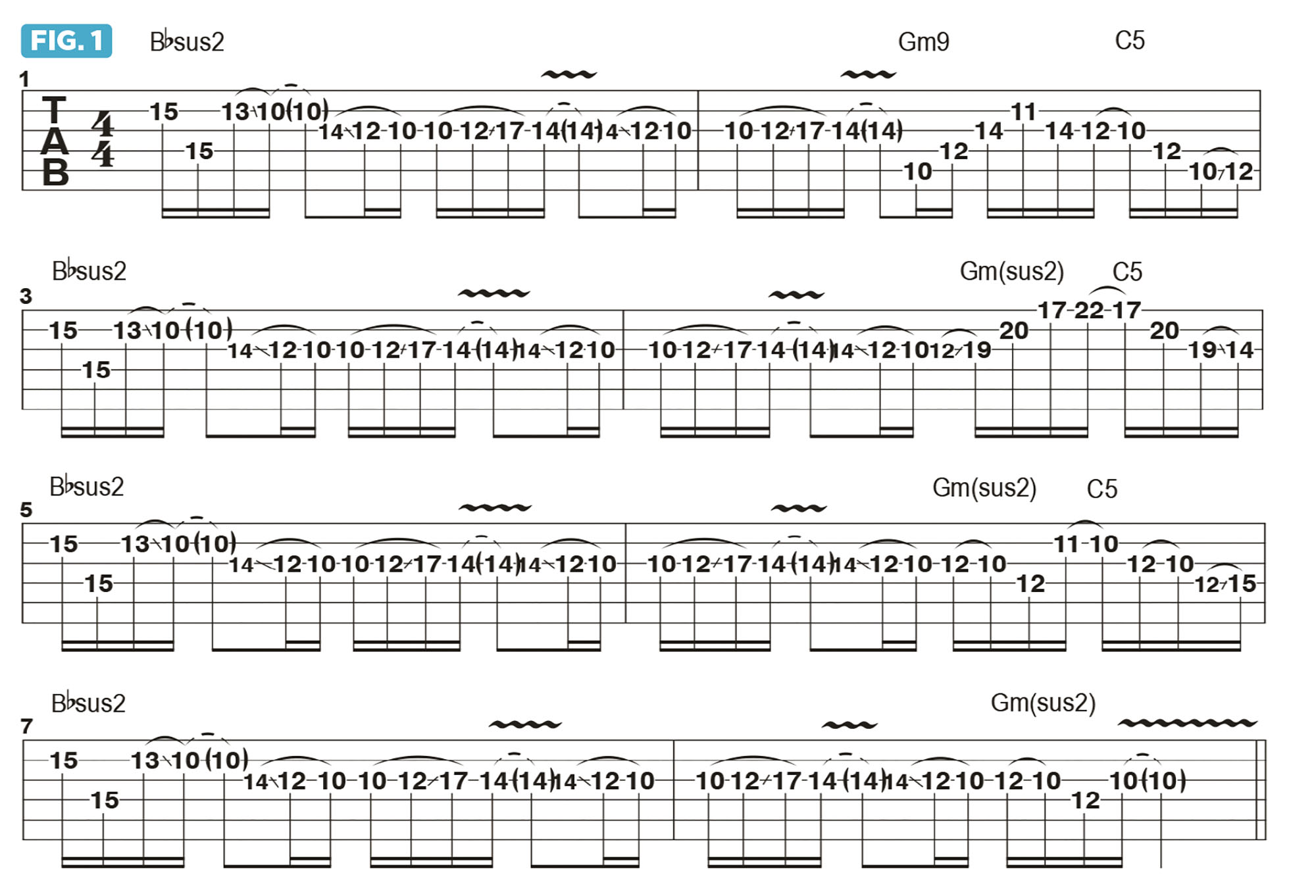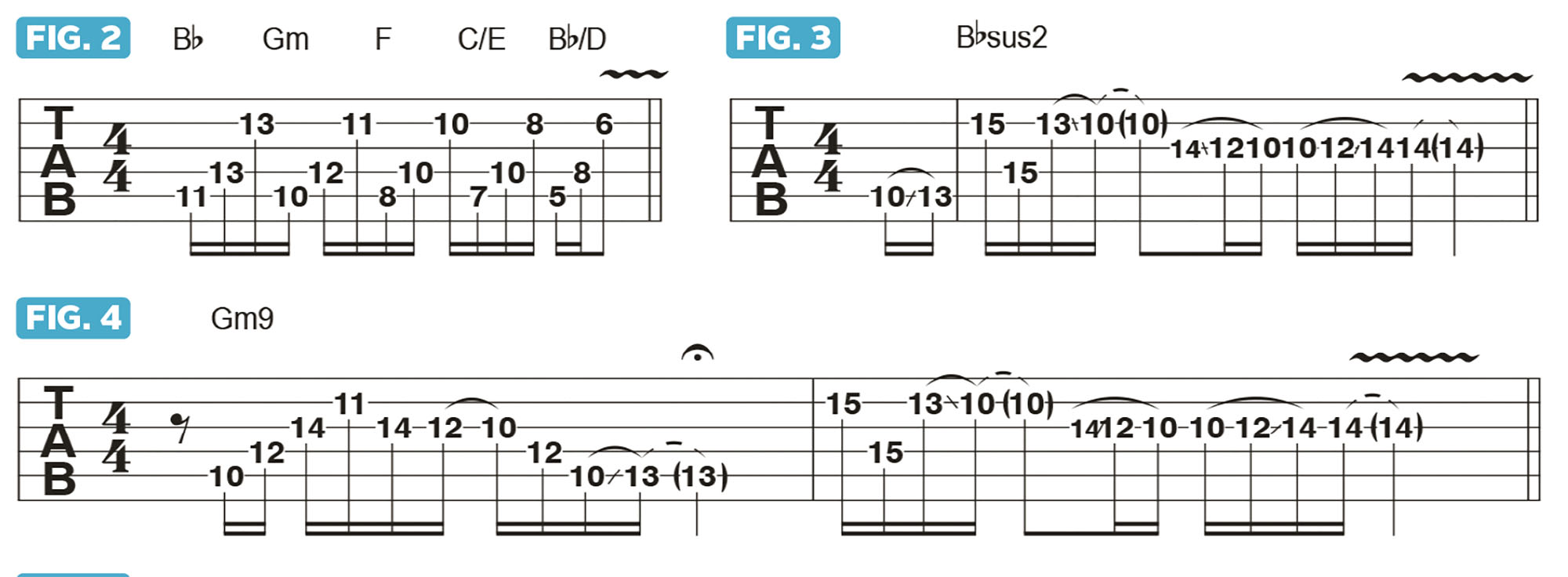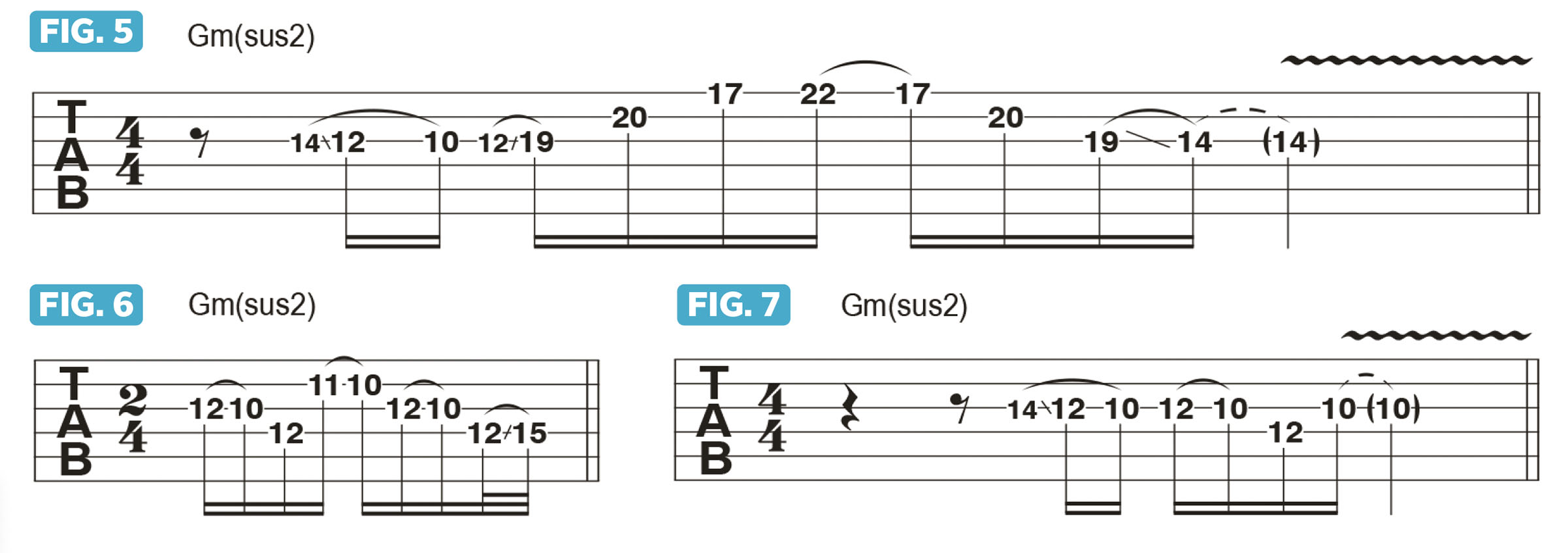
I’m a big fan of Steve Vai and Guthrie Govan, both of whom are known for liberally employing legato articulations in their melody playing, such as slides, hammer-ons, pull-offs, bends and glissandos (long slides).
These techniques are very effective for giving your lines a slippery, rubber band-like sound. The chorus melody from the title track to my latest album, Charisma, offers a nice example of how I use these techniques to create see-saw-like melodic figures during this section.
Figure 1 illustrates the eight-bar chorus melody of Charisma. In every bar here, I play a melodic line up and down the G string, with combinations of slides, hammer-ons and pull-offs. As this recurring phrase serves as the centerpiece for the chorus melody, it's essential for it to be performed in this specific legato fashion.

The song is in the key of F, and the chorus section begins on the IV (four) chord, Bb, starting with the notes D and F, which are, respectively, the major 3rd and 5th of Bb. I then shift to legato phrasing via the slide from C down to A on the 2nd string, followed by the slide and pull-off down to G and F on the 3rd string.
I continue this phrasing approach through the G, C and A notes, all played on the G string and performed through the remainder of bar 1 through the first half of bar 2.

The impetus for this melody came from open-voiced triads, often referred to by guitarists as “Eric Johnson” triads, as illustrated in Figure 2. Each is played on the A, D and B strings, starting with Bb and followed by Gm, F, C/E and Bb/D.
Figure 3 indicates this initial melodic phrase, which kicks off in the pickup bar with a long slide from F up to Bb on the 5th string and then moves into the glissando-based chorus melody.
The melody is constructed of the four-and-a-half beat primary line, which is played four times and culminates each time with a different three-and-a-half-beat ending.
The first of these endings is played in bar 2 of Figure 1 and also illustrated in Figure 4. Here, a Gm(add9) arpeggio is built from the note stack G - D - A - Bb. Bar 2 of Figure 4 illustrates how I then move to a restatement of the primary melodic line.

The second ending is shown in bar 4 of Figure 1, beats 3 and 4, and zeroed-in on in Figure 5. Here, I slide up to D, on the G string’s 19th fret, which is followed by the notes G, A and D on the top two strings. I then move back down through the same notes.
The third ending is shown in Figure 1, bar 5, beats 3 and 4, and also in Figure 6. This can be analyzed as a fairly simple idea based on the F major hexatonic scale (F, G, A, Bb, C, D).
The fourth and final ending is shown in bar 8, beats 3 and 4, of FIGURE 1, and in Figure 7. Like Figure 6, this is another simple line, this one based on F major pentatonic (F, G, A, C, D).
- Charisma is out now via BFD.







